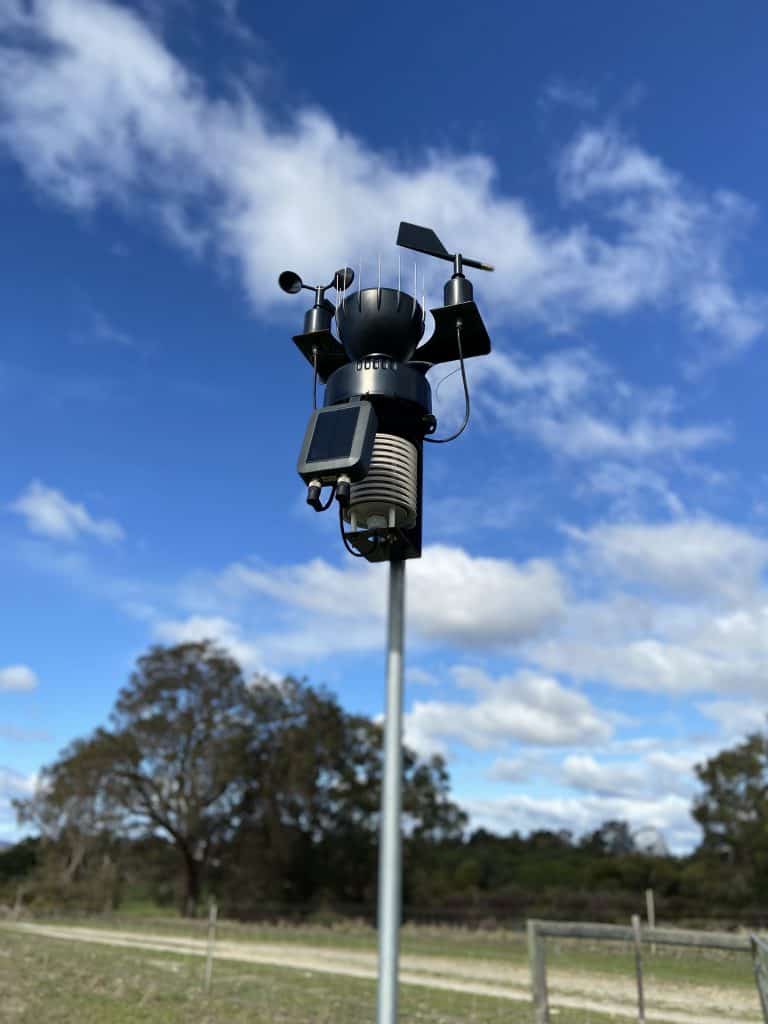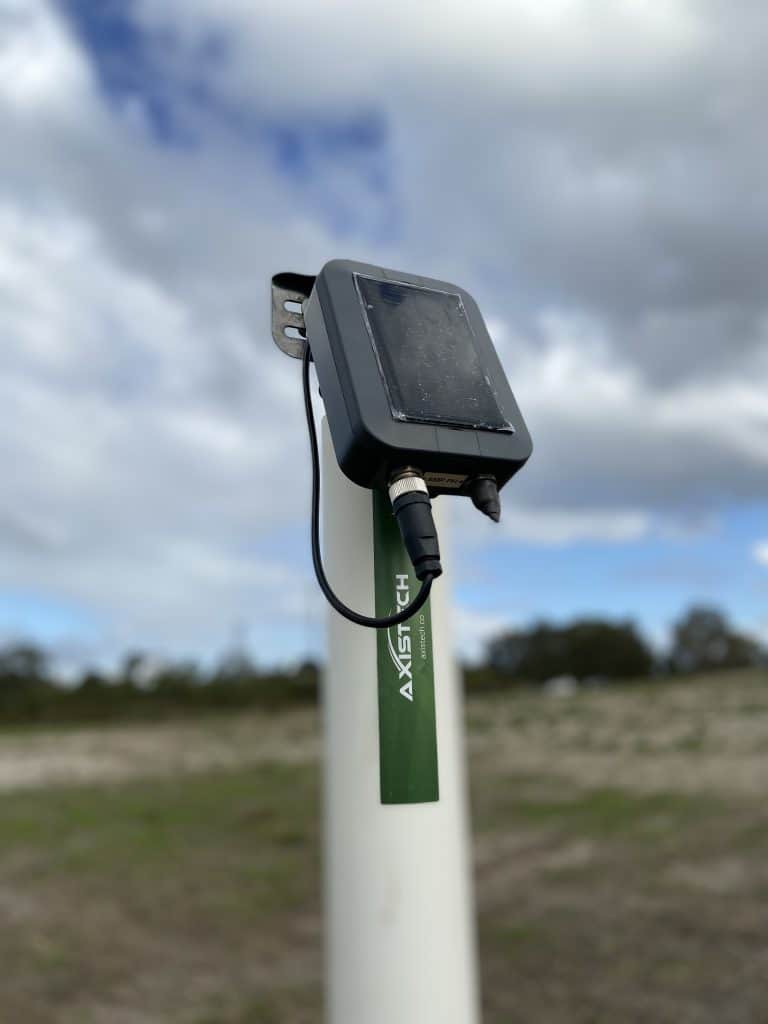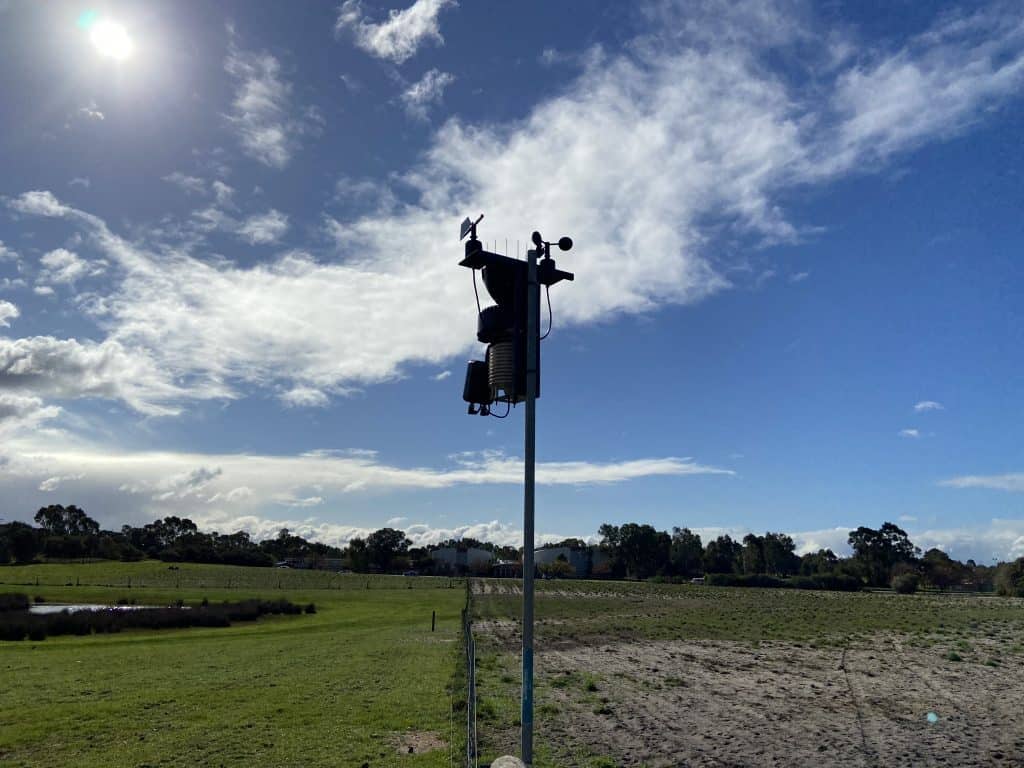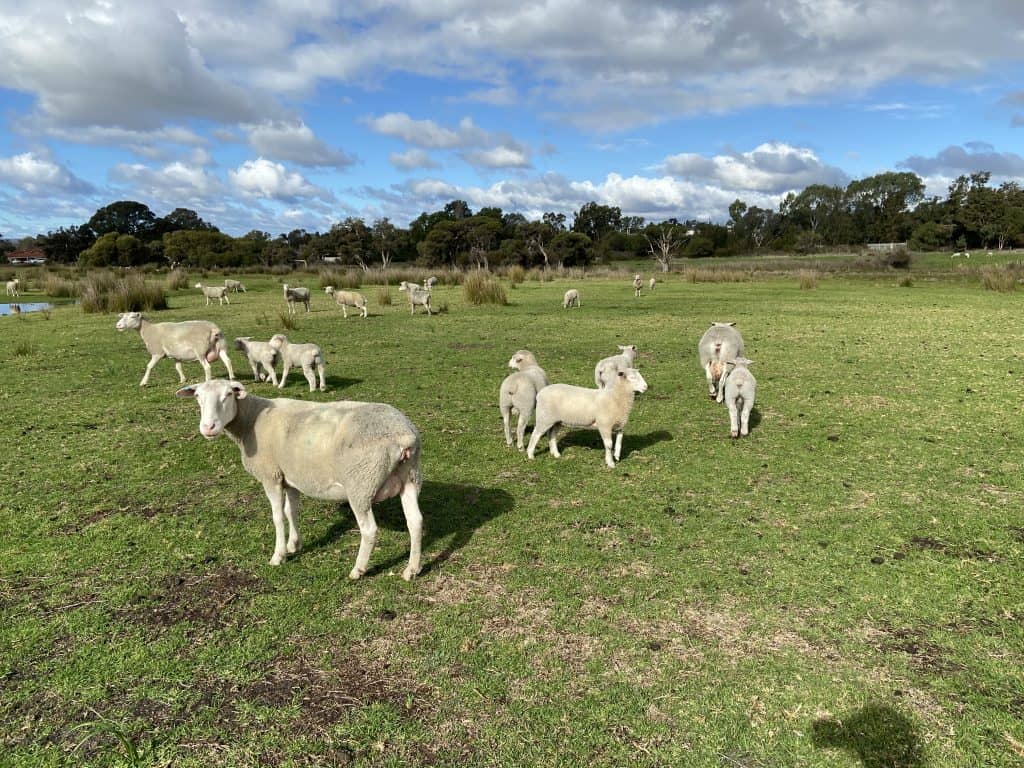WA IoT DecisionAg Milestone 4 Case Study
Department of Primary Industries and Development - Kiara College, Western Australia
At the commencement of the project, the following devices were installed at the College:
- Sigfox Base Station for device connectivity
- 1 x weather station (rainfall, wind speed, wind direction, temperature, relative humidity, barometric pressure)
- 1 x rain gauge
- 7 x soil moisture probes (moisture & temperature)
- 7 x soil pH probes
Upon completion of the grant program, we have identified several key learnings which will help us and others make the most of future IoT projects.
Planning
Before commencing an IoT project, significant planning needs to take place to ensure the right solution is implemented. Some of the questions that need to be answered include:
- What outcomes do you want to achieve from your IoT project?
- How many devices and what types do you need to achieve your outcomes?
- Where do the devices need to be installed for the best results?
- What do you need to learn from the data delivered by your IoT devices?
- How can IoT devices help you with efficiency in your operations?
- Do we need a control site to compare data with?
- How will the data be displayed and how will it be used?
- Who needs access to the data?
- What other information or data is required to assist with your project?
Animal Protection
We have discovered from this project that adequately protecting devices from animals is crucial. Unfortunately, we had many devices damaged by livestock which impacted the overall project and the delivery of data as well as rodents chewing on cables for the Sigfox base station which at one point affected connectivity. Animals should never be underestimated!
AxisTech has been working to replace and repair these devices and reinstall them with adequate animal protection so that we can continue collecting data for future projects and implement IoT into our school curriculum.
IoT is for the Long Term
When it comes to projects that require analysis of data, such as soil moisture, salinity and pH levels, it needs to be understood that the more data collected over time the better the results. For example, changes to soil is impacted by weather and treatments but the more data collected enables the user to assess changes due to inputs or other environmental factors and then make comparisons to the changes in different soil types. Agricultural climates are very cyclical and need to be observed for at least a full season to be able to develop a base line understanding.
The project that we commenced as part of the WA IoT DecisionAg Grant was a pastural improvement program. We intended on proving whether adding clay to a paddock improves the moisture retention qualities of the soil and therefore the crop output in comparison to other paddocks that did not receive the clay input. Preliminary findings are that clay has a significant impact at a surface level and requires deeper tillage to have an effect at a deeper sub-surface level and that a mid-range application level appears to be optimal for moisture retention benefits but more data collection and further analysis is required to confirm this and provide a more technical understanding.
This project is ongoing and will continue beyond the grant period and will be introduced into the school curriculum along with other data-related projects.
Understanding IoT Data
As part of the WA DecisionAg Grant project, AxisTech provided Kiara College with a dashboard that displays data from the following devices:
- Weather Station
Temperature
Relative humidity
Wind speed
Wind direction
Rainfall
Barometric pressure
- Rain Gauge
Rainfall - Soil probes
Soil moisture
Soil temperature
The data is displayed on the dashboard in graphical form so that trends and changes can be identified and observed in relation to specific events including weather or soil treatments. There are many ways in which we can use this data now and into the future including:
- Observe changes in weather patterns from month to month and year to year.
- Compare localised rainfall at Kiara College
- Compare local weather information at Kiara College with the information provided by BOM
- Ascertain which paddocks at Kiara College have the best water retention and discover why this is happening
- Measure soil moisture in the irrigated paddocks and determine whether the paddock is being over or under watered and adjusted the irrigation system accordingly
- Monitor soil moisture levels during each season
- Determining the type and quantity of inputs to soil and how this impacts moisture retention
Kiara College will continue working with AxisTech on further understanding our knowledge of IoT devices and how to interpret and use the data to achieve our outcomes.
Context is Important
For projects to be successful, as part of the planning process, additional contextual information needs to be acquired and utilised in line with the real-time data. In the case of our Pastoral Improvement program, information regarding timing and amounts of clay input to soil is important to enable observation of changes to such things as soil water retention and crop output to be attributed to the input.
Thank you!







